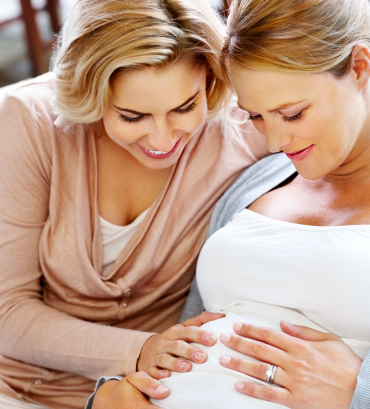
Gynaecology is the branch of Medicine that looks after women’s reproductive organ and health.
I look after a spectrum of gynaecological issues including but not limited to menstrual dysfunction, pelvic pain, fertility issues, ovarian cysts, fibroid, endometriosis, prolapse, urinary incontinence, abnormal smears, cancer risk reducing surgery.
A lot of gynaecological problems can be treated conservatively or with medication. However if surgery is required, most of my surgeries are done through minimal access (key hole) which provides the benefit of quicker recovery, lesser pain, better healing and aesthetic and shorter hospital stay.
Hysteroscopy
This is a minor surgery mostly performed for investigation of abnormal uterine bleeding. Traditionally this was done under general anaesthesia. Nowadays more and more of these procedures are being performed as an outpatient under local anaesthesia with the patient being awake. It is very well tolerated.
Surgery for Heavy Period
Most cases of heavy period can be treated with hormonal and non hormonal medication or levonorgestrel intrauterine device. In other cases there is a clear cause such as a polyp or fibroid which can be surgically removed. In some cases, especially when medication fails, some women may opt to have endometrial ablation (burning of the lining of the womb) or hysterectomy (removal of the womb).
Surgery for ovarian cyst
Most benign ovarian cyst that require surgery can be done through key hole. Depending on a number of factors such as your age, fertility wishes, type of cyst, family history, the options are removal of the cyst (ovarian cystectomy) or removal of the ovary (oophorectomy).
Surgery for Fibroid
About 20% of women have fibroids. Many of them are unaware as it does not cause any problem. Fibroids are benign tumours of the uterine (womb) muscle. Depending on a number of factors such as number and location of fibroids, patient symptoms, age, the options are myomectomy (surgical excision of fibroid), uterine artery embolisation (performed by a Radiologist to stop the blood supply to the fibroid) and Hysterectomy (removal of the uterus).
Surgery for Endometriosis
Endometriosis is the presence of endometrium (linning of the womb), outside the womb. It responds to your cyclical hormone and results in chronic inflammation. Endometriosis can cause period pain, pelvic pain, pain during sexual intercourse, infertility, ovarian cyst and other symptoms. Surgical management of endometriosis are mainly performed through key hole surgery and examples are excision of endometriosis, diathermy (burning) of endometriosis, excision of endometrioma (ovarian cyst associated with endometriosis).
Risk Reducing Surgery
This surgery is reserved for patients with strong family history of ovarian and other familial cancer or those with known gene abnormalities that increases risk of ovarian or uterine cancer. It is a preventative surgery mostly done by key hole. Options include removal of the ovaries and tubes only or removal of the ovaries, tubes and womb.
Surgery for prolapse
Aging, previous vaginal birth and body weight increase the risk of pelvic organ prolapse. The bladder, the rectum and the womb can prolapse individually or together. This can cause dragging sensation, sensation of a lump in the vagina, pelvic pain, urinary and bowel symptoms. Prolapse can affect a person’s quality of life. Some surgical options for treating prolapse include anterior repair (for bladder prolapse into the vagina), posterior repair (bowel prolapse into the vagina) and vaginal hysterectomy (for womb prolapse).
Surgery for Urinary Incontinence
Stress incontinence is when there is involuntary leaking of urine with increase in intra-abdominal pressure (coughing, sneezing, jumping). Urge incontinence is when there is difficulty in controlling the bladder and patients typically describe “when I have to go, I have to go”. Mixed incontinence is when there is evidence of both stress and urge symptoms.Surgery is indicated for stress incontinence. I perform Transobturator Tape (TOT) procedure. This is a mid-urethral sling operation that involves inserting a tape below the water tube (urethra) to act as a support during coughing/ sneezing. The TOT procedure can be performed under a general or regional (spinal) anaesthetic. The tape is put into place through small incisions on each side of the groin and through the vagina.
Hysterectomy
There are 3 ways of performing a hysterectomy (surgical removal of the womb). They are minimal access (key hole Laparoscopy or Robotic), abdominal (through incision in your tummy) or vaginally. Hysterectomy is a major gynaecological procedure There are a number of indication for a hysterectomy. Some indication for hysterectomy are abnormal uterine bleeding, womb prolapse, abnormal cells in the womb or neck of the womb, fibroid, cancer and cancer prevention. The surgical route will depend on the reason of the hysterectomy and other factors such as the size and mobility of the womb and previous surgeries.


